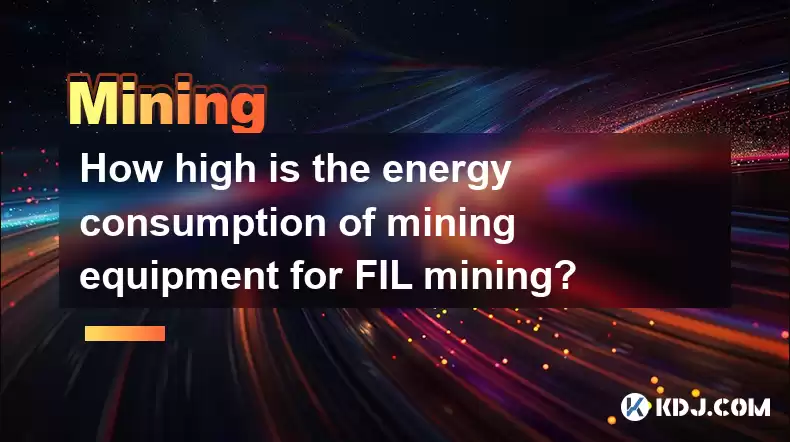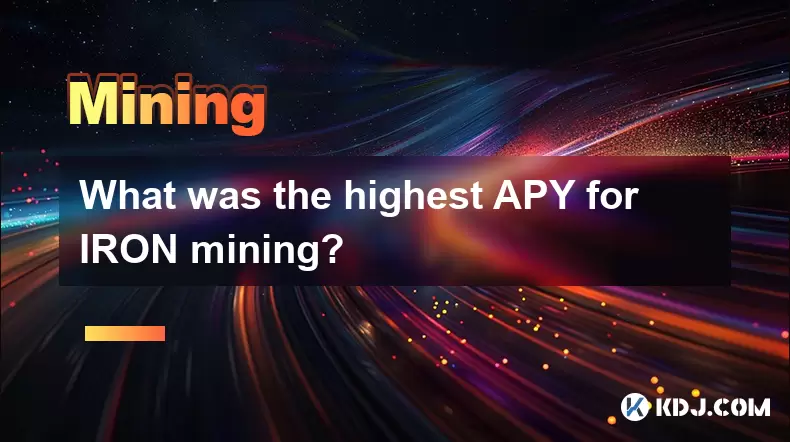-
 Bitcoin
Bitcoin $115200
0.71% -
 Ethereum
Ethereum $3716
6.25% -
 XRP
XRP $3.076
5.28% -
 Tether USDt
Tether USDt $0.0000
0.00% -
 BNB
BNB $766.7
1.87% -
 Solana
Solana $168.5
4.16% -
 USDC
USDC $0.9999
0.00% -
 TRON
TRON $0.3326
1.79% -
 Dogecoin
Dogecoin $0.2093
5.14% -
 Cardano
Cardano $0.7543
4.02% -
 Stellar
Stellar $0.4147
4.43% -
 Hyperliquid
Hyperliquid $38.59
0.71% -
 Sui
Sui $3.594
4.51% -
 Chainlink
Chainlink $17.13
5.12% -
 Bitcoin Cash
Bitcoin Cash $558.9
2.49% -
 Hedera
Hedera $0.2519
1.51% -
 Avalanche
Avalanche $22.91
7.05% -
 Ethena USDe
Ethena USDe $1.001
0.00% -
 Litecoin
Litecoin $120.3
10.01% -
 Toncoin
Toncoin $3.419
-4.46% -
 UNUS SED LEO
UNUS SED LEO $8.921
-0.34% -
 Shiba Inu
Shiba Inu $0.00001249
2.39% -
 Uniswap
Uniswap $9.944
8.41% -
 Polkadot
Polkadot $3.728
3.18% -
 Monero
Monero $308.0
1.78% -
 Dai
Dai $0.9998
-0.02% -
 Bitget Token
Bitget Token $4.389
1.58% -
 Pepe
Pepe $0.00001075
2.71% -
 Cronos
Cronos $0.1397
6.39% -
 Aave
Aave $269.7
3.95%
How high is the energy consumption of mining equipment for FIL mining?
FIL mining's energy use varies with hardware: HDDs consume 6-12W, SSDs 2-5W, and enterprise solutions 10-20W per drive, impacting large-scale operations' efficiency.
Apr 14, 2025 at 02:15 pm

The energy consumption of mining equipment for FIL (Filecoin) mining is a topic of significant interest and concern within the cryptocurrency community. Filecoin operates on a Proof-of-Replication and Proof-of-Spacetime consensus mechanism, which differs from traditional Proof-of-Work (PoW) systems like Bitcoin. This unique approach impacts the energy consumption profile of FIL mining equipment.
Understanding FIL Mining and Energy Consumption
FIL mining involves storing data on the InterPlanetary File System (IPFS), a decentralized storage network. Miners are rewarded for providing and maintaining storage space. Unlike Bitcoin mining, which requires high-performance GPUs or ASICs to solve complex mathematical problems, FIL mining primarily utilizes hard drives or SSDs to store data. This difference in hardware requirements directly influences the energy consumption patterns.
Types of Hardware Used in FIL Mining
FIL mining can be conducted using various types of hardware, each with its own energy consumption characteristics. Hard Disk Drives (HDDs) are commonly used due to their cost-effectiveness and large storage capacities. Solid State Drives (SSDs) offer faster data access but at a higher cost and with different energy profiles. Enterprise-grade storage solutions are also employed by some miners, providing higher reliability but often with increased energy demands.
Energy Consumption of HDDs in FIL Mining
HDDs are the most common choice for FIL mining due to their affordability and high storage capacity. The energy consumption of an HDD can vary based on its size, model, and usage patterns. For instance, a typical 3.5-inch HDD used in FIL mining might consume between 6 to 10 watts when idle and 7 to 12 watts during active operation. When considering a large-scale mining operation with thousands of HDDs, the cumulative energy consumption can be substantial.
Energy Consumption of SSDs in FIL Mining
SSDs offer an alternative to HDDs, particularly for miners who prioritize speed and efficiency. The energy consumption of SSDs is generally lower than HDDs, with typical consumption ranging from 2 to 5 watts per drive. However, the higher cost per gigabyte of storage can make SSDs less attractive for large-scale FIL mining operations. Despite the lower energy consumption per drive, the overall energy efficiency must be weighed against the cost and storage capacity.
Energy Consumption of Enterprise-Grade Storage Solutions
Enterprise-grade storage solutions are designed for high reliability and performance, making them a popular choice for large-scale FIL mining operations. These solutions often include RAID configurations and other advanced features that enhance data integrity and availability. The energy consumption of enterprise-grade storage can vary widely, but a typical setup might consume 10 to 20 watts per drive. The higher energy consumption is offset by the increased reliability and performance, which are critical for maintaining FIL mining operations.
Factors Affecting Energy Consumption in FIL Mining
Several factors can influence the energy consumption of FIL mining equipment. Drive efficiency, cooling requirements, and data access patterns all play a role in determining the overall energy footprint. Efficient drives with lower power consumption can significantly reduce the energy costs associated with FIL mining. Additionally, proper cooling is essential to prevent overheating, which can lead to increased energy use. The frequency and nature of data access can also impact energy consumption, as more active drives consume more power.
Practical Considerations for Reducing Energy Consumption
Miners can take several steps to optimize the energy efficiency of their FIL mining operations. Choosing energy-efficient hardware is a primary consideration. For instance, selecting HDDs or SSDs with lower idle and active power consumption can lead to significant energy savings. Implementing effective cooling strategies, such as using energy-efficient fans or liquid cooling systems, can also help reduce overall energy use. Optimizing data storage and access patterns to minimize unnecessary power consumption is another important strategy.
Case Studies of FIL Mining Energy Consumption
Several case studies illustrate the energy consumption profiles of FIL mining operations. One study conducted by a large-scale FIL mining operation found that their setup, consisting of 10,000 HDDs, consumed approximately 100 kilowatts of power during peak operation. Another case study focused on a smaller operation using SSDs reported an average energy consumption of 20 kilowatts for a setup with 2,000 drives. These examples highlight the variability in energy consumption based on the scale and type of hardware used.
Environmental Impact of FIL Mining
The environmental impact of FIL mining is a growing concern within the cryptocurrency community. The high energy consumption associated with large-scale mining operations can contribute to carbon emissions and environmental degradation. Miners are increasingly exploring renewable energy sources, such as solar or wind power, to mitigate their environmental footprint. Additionally, some FIL mining operations are located in regions with access to affordable and sustainable energy sources, further reducing their environmental impact.
Frequently Asked Questions
Q: How does the energy consumption of FIL mining compare to Bitcoin mining?
A: FIL mining typically consumes less energy per unit of storage compared to Bitcoin mining, which relies on energy-intensive Proof-of-Work computations. However, the total energy consumption of FIL mining can still be significant, especially in large-scale operations.
Q: Can FIL miners use renewable energy sources to reduce their environmental impact?
A: Yes, many FIL miners are turning to renewable energy sources such as solar, wind, and hydroelectric power to reduce their environmental impact. These sources can provide a more sustainable energy solution for mining operations.
Q: What are some strategies for optimizing energy efficiency in FIL mining?
A: Strategies for optimizing energy efficiency in FIL mining include selecting energy-efficient hardware, implementing effective cooling systems, and optimizing data storage and access patterns to minimize unnecessary power consumption.
Q: How does the choice of storage hardware impact the energy consumption of FIL mining?
A: The choice of storage hardware significantly impacts the energy consumption of FIL mining. HDDs generally consume more power than SSDs, but their lower cost per gigabyte makes them more common in large-scale operations. Enterprise-grade solutions offer higher reliability but at the cost of increased energy consumption.
Disclaimer:info@kdj.com
The information provided is not trading advice. kdj.com does not assume any responsibility for any investments made based on the information provided in this article. Cryptocurrencies are highly volatile and it is highly recommended that you invest with caution after thorough research!
If you believe that the content used on this website infringes your copyright, please contact us immediately (info@kdj.com) and we will delete it promptly.
- Cryptocurrency, Altcoins, and Profit Potential: Navigating the Wild West
- 2025-08-04 14:50:11
- Blue Gold & Crypto: Investing Disruption in Precious Metals
- 2025-08-04 14:30:11
- Japan, Metaplanet, and Bitcoin Acquisition: A New Era of Corporate Treasury?
- 2025-08-04 14:30:11
- Coinbase's Buy Rating & Bitcoin's Bold Future: A Canaccord Genuity Perspective
- 2025-08-04 14:50:11
- Coinbase's Buy Rating Maintained by Rosenblatt Securities: A Deep Dive
- 2025-08-04 14:55:11
- Cryptos, Strategic Choices, High Returns: Navigating the Meme Coin Mania
- 2025-08-04 14:55:11
Related knowledge

What was the highest APY for IRON mining?
Jul 23,2025 at 05:14am
Understanding IRON Token and Its Mining MechanismThe IRON token is a stablecoin that operates within the Iron Finance ecosystem, primarily on blockcha...

What is impermanent loss in IRON pools?
Jul 23,2025 at 09:00am
Understanding Impermanent Loss in the Context of IRON PoolsImpermanent loss is a phenomenon that affects liquidity providers in decentralized finance ...

How to claim rewards from IRON mining?
Jul 23,2025 at 02:21pm
Understanding IRON Mining and Reward MechanismsIRON Finance operated as a decentralized finance (DeFi) protocol on the Polygon and Binance Smart Chain...

How to claim rewards from IRON mining?
Jul 29,2025 at 05:07am
Understanding IRON Mining and Reward MechanismIRON is a dual-token system designed to stabilize the value of a synthetic asset through a combination o...

IRON mining tutorial for beginners
Jul 27,2025 at 12:01am
What Is IRON and How Does It Work in the Cryptocurrency Ecosystem?IRON is a cryptocurrency token that operates on the Binance Smart Chain (BSC) and is...

How to calculate APY for IRON mining?
Jul 28,2025 at 09:49am
Understanding APY in the Context of IRON Token MiningWhen engaging in IRON token mining within decentralized finance (DeFi) platforms, Annual Percenta...

What was the highest APY for IRON mining?
Jul 23,2025 at 05:14am
Understanding IRON Token and Its Mining MechanismThe IRON token is a stablecoin that operates within the Iron Finance ecosystem, primarily on blockcha...

What is impermanent loss in IRON pools?
Jul 23,2025 at 09:00am
Understanding Impermanent Loss in the Context of IRON PoolsImpermanent loss is a phenomenon that affects liquidity providers in decentralized finance ...

How to claim rewards from IRON mining?
Jul 23,2025 at 02:21pm
Understanding IRON Mining and Reward MechanismsIRON Finance operated as a decentralized finance (DeFi) protocol on the Polygon and Binance Smart Chain...

How to claim rewards from IRON mining?
Jul 29,2025 at 05:07am
Understanding IRON Mining and Reward MechanismIRON is a dual-token system designed to stabilize the value of a synthetic asset through a combination o...

IRON mining tutorial for beginners
Jul 27,2025 at 12:01am
What Is IRON and How Does It Work in the Cryptocurrency Ecosystem?IRON is a cryptocurrency token that operates on the Binance Smart Chain (BSC) and is...

How to calculate APY for IRON mining?
Jul 28,2025 at 09:49am
Understanding APY in the Context of IRON Token MiningWhen engaging in IRON token mining within decentralized finance (DeFi) platforms, Annual Percenta...
See all articles

























































































